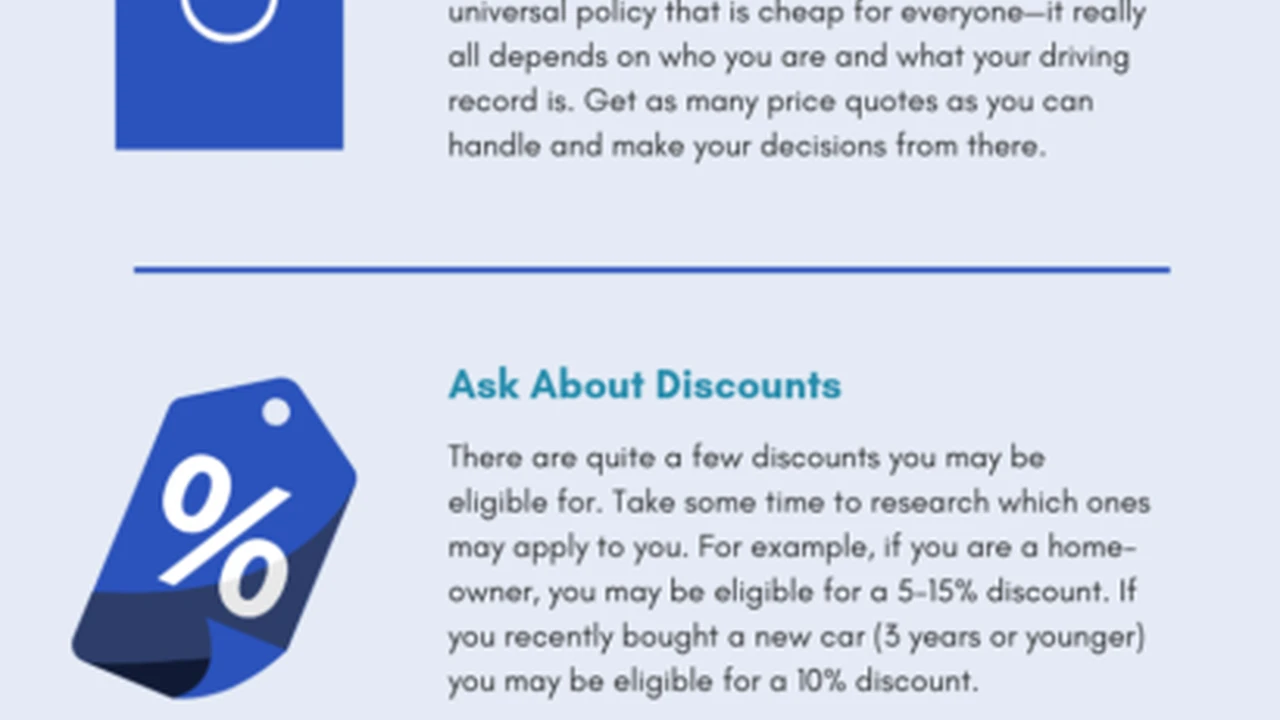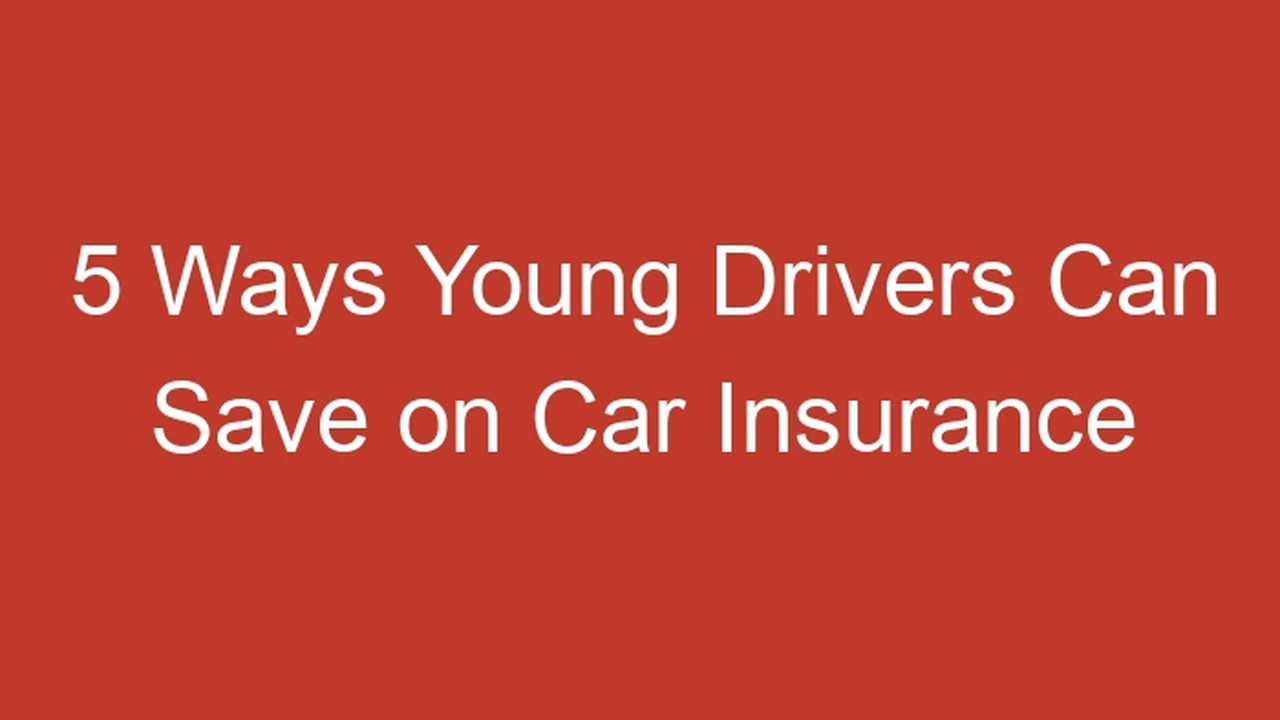5 Ways to Maximize Your Auto Insurance Savings in New York
Learn 5 ways to maximize your auto insurance savings in New York. Get state-specific advice to lower your car insurance costs in the Empire State.

5 Ways to Maximize Your Auto Insurance Savings in New York
Hey there, New Yorkers! Let's talk about something that probably isn't as exciting as a Broadway show or a Yankees game, but it's just as important for your wallet: auto insurance. Living in the Empire State, especially if you're in the five boroughs, means dealing with some of the highest insurance rates in the country. But don't throw in the towel just yet! There are plenty of smart moves you can make to significantly cut down those premiums without sacrificing essential coverage. We're going to dive deep into five actionable strategies, including specific product recommendations and how they stack up, to help you keep more of your hard-earned cash.
Understanding New York Auto Insurance Basics and Your Premiums
Before we jump into saving, it's crucial to understand why New York auto insurance can be so pricey. Factors like population density, high accident rates, the prevalence of uninsured drivers, and the state's no-fault insurance system all contribute. New York is a 'no-fault' state, meaning your own insurance company pays for your medical expenses and lost wages up to a certain limit, regardless of who caused the accident. This Personal Injury Protection (PIP) coverage is mandatory and can add to your premium. Plus, if you live in a high-traffic area like Manhattan or Brooklyn, your rates will naturally be higher due to increased risk of accidents and theft. Knowing these underlying factors helps you appreciate why strategic saving is so important here.
Strategy 1: Smart Shopping and Comparing Quotes for New York Drivers
This might sound obvious, but it's the single most effective way to save money on auto insurance, especially in a competitive market like New York. Don't just stick with the first quote you get or blindly renew with your current provider. Insurance companies use different algorithms and have varying appetites for risk, meaning their prices for the exact same coverage can differ wildly. You should be comparing quotes at least once a year, or whenever a significant life event occurs (like moving, getting married, or buying a new car).
Recommended Comparison Tools and Platforms for New York Auto Insurance
- Online Aggregators: Websites like The Zebra, NerdWallet, and Bankrate are fantastic starting points. They allow you to input your information once and get multiple quotes from various carriers simultaneously. This saves a ton of time and gives you a broad overview of the market.
- Direct Carrier Websites: Don't forget to check major carriers directly. Sometimes, they offer exclusive online discounts not available through aggregators. Think GEICO, Progressive, State Farm, Allstate, and Liberty Mutual.
- Independent Agents: For a more personalized approach, especially if you have a complex driving history or unique needs, an independent insurance agent can be invaluable. They work with multiple insurance companies and can shop around for you, often finding deals you might miss. They understand the nuances of New York's insurance landscape.
Comparison Scenario: John from Brooklyn vs. Sarah from Upstate
Let's say John, a 30-year-old living in Brooklyn with a 2018 Honda Civic, gets quotes. Through an aggregator, he finds:
- GEICO: $2,800/year
- Progressive: $3,100/year
- State Farm: $2,950/year
Meanwhile, Sarah, a 30-year-old living in Rochester with the same car and driving record, gets:
- GEICO: $1,800/year
- Progressive: $1,950/year
- State Farm: $1,700/year
This illustrates how location within New York dramatically impacts rates. Even with these differences, comparing still yields significant savings. John might save $300 by choosing GEICO over Progressive, while Sarah saves $250 by choosing State Farm over Progressive. The key is to always compare, regardless of your location.
Strategy 2: Maximizing Discounts and Bundling Opportunities in New York
Insurance companies love to offer discounts, but it's up to you to find and claim them. Many New Yorkers leave money on the table by not asking about or qualifying for all available discounts. This is where a little proactive effort can pay off big time.
Common and New York-Specific Auto Insurance Discounts
- Multi-Policy Discount (Bundling): This is a huge one. If you have homeowners, renters, or even life insurance, bundling it with your auto policy from the same provider can lead to significant savings, often 10-25% on both policies.
- Good Driver Discount: If you have a clean driving record (no accidents or tickets for a certain period, usually 3-5 years), you're likely eligible.
- Defensive Driving Course Discount: New York State offers a mandatory 10% discount on your auto liability and collision premiums for three years if you complete a state-approved Point & Insurance Reduction Program (PIRP). This is a no-brainer for many New Yorkers! Online providers like New York Safety Council or Improv Traffic School offer these courses for around $25-$40.
- Good Student Discount: For younger drivers (typically under 25) with good grades (B average or higher), this can be a lifesaver for parents.
- Vehicle Safety Features: Discounts for anti-lock brakes, airbags, anti-theft devices, and even newer vehicles with advanced driver-assistance systems (ADAS) like lane-keeping assist or automatic emergency braking.
- Low Mileage Discount: If you don't drive much, especially relevant for city dwellers who rely on public transport, you might qualify.
- Payment Discounts: Paying your premium in full, setting up automatic payments, or opting for paperless billing can often net you small but worthwhile discounts.
- Telematics Programs (Usage-Based Insurance): Many insurers offer devices or apps that monitor your driving habits (speed, braking, mileage). If you're a safe driver, this can lead to substantial savings. Examples include Progressive's Snapshot, GEICO's DriveEasy, and State Farm's Drive Safe & Save.
Bundling Example: The Chen Family in Queens
The Chen family in Queens has their auto insurance with Liberty Mutual and their homeowners insurance with another company. By bundling both with Liberty Mutual, they could save an average of 15% on their combined premiums. If their auto premium was $3,000 and homeowners was $1,500, a 15% discount would save them $675 annually. It's a simple phone call or online quote away!
Strategy 3: Adjusting Coverage and Deductibles for Optimal Savings in New York
While you never want to be underinsured, you also don't want to pay for coverage you don't truly need. Regularly reviewing your policy and making smart adjustments to your coverage levels and deductibles can lead to significant savings.
Evaluating Your Coverage Needs and Deductibles
- Raising Your Deductible: This is one of the quickest ways to lower your premium. A deductible is the amount you pay out-of-pocket before your insurance kicks in. If you increase your collision and comprehensive deductibles from, say, $500 to $1,000, your premium could drop by 10-20%. Just make sure you have enough in your emergency fund to cover that higher deductible if you need to file a claim.
- Dropping Collision and Comprehensive on Older Cars: If your car is older and its market value is low (e.g., under $3,000-$4,000), the cost of collision and comprehensive coverage might outweigh the potential payout. If your car gets totaled, the insurance company will only pay its actual cash value. If that's less than your annual premium for these coverages, it might be time to drop them and just carry liability.
- Reviewing Liability Limits: While New York has minimum liability requirements ($25,000 per person / $50,000 per accident for bodily injury, $10,000 for property damage), these are often too low to adequately protect your assets in a serious accident. However, if you've accumulated significant assets, consider an umbrella policy rather than just maxing out your auto liability, as it offers broader protection. If your assets are minimal, you might stick closer to the state minimums, but always weigh the risk.
- Personal Injury Protection (PIP): New York requires a minimum of $50,000 in PIP. You can often purchase additional PIP coverage. If you have excellent health insurance, you might consider if higher PIP limits are truly necessary, but always consult with your insurer.
Deductible Scenario: Maria from Long Island
Maria, living in Long Island, has a 2015 Toyota Camry. Her current policy has a $500 deductible for collision and comprehensive, costing her $2,200 annually. She decides to increase her deductibles to $1,000. Her new premium drops to $1,850, saving her $350 per year. She has $1,500 in her savings account, so she's comfortable covering the higher deductible if an accident occurs. This is a smart move for someone with a good emergency fund.
Strategy 4: Improving Your Driving Record and Credit Score for New York Auto Insurance
These two factors might not seem directly related to your car, but they significantly influence your insurance rates in New York. A clean driving record signals lower risk, and a good credit score (yes, insurers use it!) suggests financial responsibility.
Driving Record and Its Impact on New York Premiums
- Avoid Accidents and Tickets: This is the most straightforward advice. Every accident or moving violation on your record will likely increase your premiums for 3-5 years. New York's Department of Motor Vehicles (DMV) assigns points for violations, and accumulating too many can lead to license suspension and even higher insurance costs.
- Take a Defensive Driving Course: As mentioned earlier, completing a New York State-approved PIRP course not only gives you a 10% discount but can also reduce up to four points from your driving record, helping to keep your record cleaner and potentially preventing future surcharges.
- Consider Accident Forgiveness: Some insurers offer 'accident forgiveness' as an add-on or a perk for long-term customers. This means your rates won't increase after your first at-fault accident. While it adds a small amount to your premium, it can save you a lot in the long run if you have an unfortunate incident.
Credit Score and Auto Insurance in New York
In New York, insurers are allowed to use credit-based insurance scores as one factor in determining your premium. A higher credit score often translates to lower insurance rates because statistics show a correlation between good credit and fewer claims. While it's not the only factor, it's an important one.
- Pay Bills on Time: This is the foundation of a good credit score.
- Keep Credit Utilization Low: Try to use less than 30% of your available credit.
- Check Your Credit Report Regularly: Dispute any errors you find. You can get a free report annually from AnnualCreditReport.com.
- Limit New Credit Applications: Too many hard inquiries can temporarily ding your score.
Credit Score Scenario: David from Buffalo
David in Buffalo had a fair credit score (around 650) and was paying $1,600 annually for his auto insurance. Over two years, he diligently worked on improving his credit score, bringing it up to 750. Upon his next renewal, his insurer (or a new one he shopped with) offered him a premium of $1,400, saving him $200 per year, partly due to his improved financial standing. This long-term strategy can have a significant impact.
Strategy 5: Leveraging Technology and Specialized Programs for New York Drivers
The insurance industry is constantly evolving, and technology offers new ways to save. From telematics to specialized programs, there are innovative options for New Yorkers looking to cut costs.
Telematics and Usage-Based Insurance (UBI) Programs
These programs use a device or smartphone app to track your driving habits. If you're a safe driver, you can earn significant discounts. This is particularly beneficial for New Yorkers who might drive less or drive very carefully, even in busy urban environments.
- Progressive Snapshot: This program typically involves a device you plug into your car's OBD-II port or a smartphone app. It monitors mileage, time of day you drive, hard braking, and rapid acceleration. Safe drivers can save an average of $145 per year.
- GEICO DriveEasy: Similar to Snapshot, DriveEasy uses a smartphone app to monitor driving behavior. It focuses on distracted driving, hard braking, and cornering. New users often get an initial discount just for signing up, with further savings based on driving performance.
- State Farm Drive Safe & Save: This program uses either the Car Connection device or the State Farm mobile app. It primarily focuses on mileage and driving behavior. Discounts can be up to 30% for very safe, low-mileage drivers.
- Allstate Drivewise: Available through the Allstate mobile app, Drivewise rewards safe driving with cash back every six months. It tracks speed, braking, and time of day.
Usage Scenario: Emily from Manhattan
Emily lives in Manhattan and primarily uses her car for weekend trips upstate, driving only about 5,000 miles a year. She enrolls in Progressive's Snapshot program. Because she drives infrequently and avoids rush hour traffic, her driving scores are excellent. After six months, she qualifies for a 20% discount on her premium, saving her $400 annually on her $2,000 policy. For low-mileage, safe drivers in New York, UBI programs are a fantastic way to get personalized rates.
Specialized Programs and Vehicle Types
- Classic Car Insurance: If you own a classic or antique car in New York, don't insure it with a standard policy. Companies like Hagerty or Grundy specialize in classic car insurance, offering agreed-value coverage (they pay out a pre-determined amount if the car is totaled) and often lower premiums because classic cars are typically driven less and meticulously maintained.
- Electric Vehicle (EV) Discounts: As EVs become more common, some insurers are starting to offer discounts for them, recognizing their advanced safety features and environmental benefits. Always ask if your EV qualifies for any special rates.
Putting It All Together: Your New York Auto Insurance Savings Plan
Maximizing your auto insurance savings in New York isn't about finding one magic bullet; it's about combining several smart strategies. Here's a quick recap and how to approach it:
- Shop Aggressively: Use online comparison tools and independent agents every 6-12 months. Don't be afraid to switch providers if you find a better deal.
- Claim Every Discount: Ask your insurer about every possible discount, especially the New York State defensive driving course discount. Bundle your policies whenever possible.
- Optimize Coverage: Adjust deductibles to a level you can comfortably afford, and consider dropping collision/comprehensive on very old, low-value vehicles.
- Drive Safely and Manage Credit: Maintain a clean driving record and work on improving your credit score. These long-term efforts pay off.
- Embrace Technology: Explore telematics programs if you're a safe, low-mileage driver.
By being proactive and informed, you can significantly reduce your auto insurance burden in the Empire State. It takes a little effort, but the savings are well worth it. Happy driving, and even happier saving!
:max_bytes(150000):strip_icc()/277019-baked-pork-chops-with-cream-of-mushroom-soup-DDMFS-beauty-4x3-BG-7505-5762b731cf30447d9cbbbbbf387beafa.jpg)






